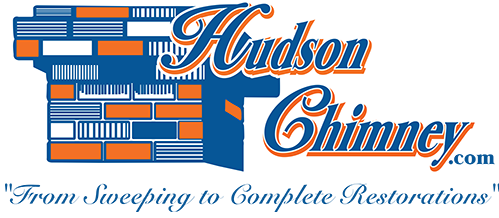Eco-Friendly Tips for Fireplace Owners.
Wood fires are beautiful and cozy, and great excuses for couples or families to enjoy a little togetherness. As we, as a culture, grow more focused on our ecological footprint, though, many of us have concerns about the effects of our wood-burning fireplace use.
We do have environmental and personal factors to consider when we use our fireplaces. Wood smoke contains poisonous carbon monoxide and other toxic air pollutants, including fine particulates, all of which can be breathed in. Studies have shown that these types of pollutants can have significant adverse health effects, contributing to ailments that range from asthma attacks to heart issues.
Your chimney system is designed to route those harmful byproducts out of your home, and away from your family. But being eco-conscientious means being intentional about the byproducts that are getting released from your home, too. And there are ways to enjoy your fireplace while minimizing its environmental impact.
What can you do?
The Environmental Protection Agency’s Burn Wise program suggests a three-step approach to earth-friendly use of your wood-burning appliance — it’s direct, easy to remember and effective. That message: “If you choose to burn wood, burn the right wood, the right way, in the right appliance.”
Be intentional about choosing your fuel
In your fireplace or stove, make sure you only burn dry, seasoned cordwood. Your fireplace wood shouldn’t have a moisture content that’s higher than 20 percent. That drier fuel allows for the right kind of burn; wood with a higher moisture content burns colder, and that creates more creosote, more smoke, and more pollutants. And while it might be tempting to get rid of trash in your fireplace or stove, tossing old furniture, plastic or other items into your fire has negative consequences — it can release toxic chemicals into your home and the environment, and damage your chimney. So remember: seasoned cordwood, and only seasoned cordwood.
Aim for hot and bright fires
An ideal fire — one with the lowest emission levels — burns hot and bright. Make sure your flue damper is completely open when you start a fire; letting a fire smolder leads to more smoke, and more smoke means more pollution.
Well-maintained chimney systems go a long way toward efficient burning — have your chimney and appliance inspected annually, and cleaned regularly too. You’re more likely to have a proper hot-burning fire with a clean, well-venting chimney and an appliance that’s in proper working order.
There are tricks to hotter, more efficient fires, too, and the old, bottom-up building method we were taught as kids isn’t the only or best way to build a fire. Lots of folks swear by the top-down method, which, when done correctly, creates less smoke and more predictable fires.
The basic approach: lay larger pieces of split, seasoned cord wood on the bottom in one direction; top that with a perpendicular layer of slightly smaller pieces, then another, slightly smaller perpendicular layer. Top that third layer with kindling, then place some newspaper (sheets rolled up and then tied in a knot work well) at the very top, and light it. You should see the flames quickly travel downward for a strong, consistent fire with less smoke and lower levels of pollutants. It’s a small change, but compounded over many, many fires (figures show that there are nearly 30 million fireplaces nationwide), it makes a difference.
Replace old appliances with newer, more efficient ones
Historic fireplaces and stoves can be beautiful, but they tend to score low on the energy-efficiency scale. Eco-friendly fireplace usage can mean replacing that old fireplace or stove with a new appliance that’s designed to make smarter use of fuel and deliver far lower emission levels.
An EPA study of fine particle emissions showed that the average levels coming from a traditional fireplace were 20 times higher than an EPA-certified woodstove, and nearly 60 times higher than that of a pellet stove. Replacing an old appliance with a newer, EPA-certified unit can dramatically decrease the level of pollutants you’re putting out — EPA-qualified heating appliances burn around 70 percent cleaner than traditional, older fireplaces.
You can feel confident that you’re using the industry’s most efficient appliances by supporting companies that take part in the EPA’s Wood-Burning Fireplace Program. The program is a partnership between the EPA, the U.S. Office of Air Quality Planning and Standards and appliance manufacturers. Those manufacturers commit to designing and producing cleaner-burning fireplaces that put out lower levels of particulate emission — which means they’re polluting less. You’ll see a tag on appliances that meet the EPA’s clean-burning standards, or you can take a look at a list of qualified fireplaces and retrofit devices on the EPA’s website: http://www.epa.gov/burnwise/fireplacelist.html.
Some state and local agencies have replacement programs that offer refunds to homeowners who replace an old fireplace or stove with new, EPA- fireplaces, stoves or inserts. Look up your area on the EPA’s website, too, to see if there might be a helpful program in your area.
You can love your fireplace and love the planet — it just takes the intention, a little knowledge, and, maybe, the help of a knowledgeable fireplace and chimney company.


